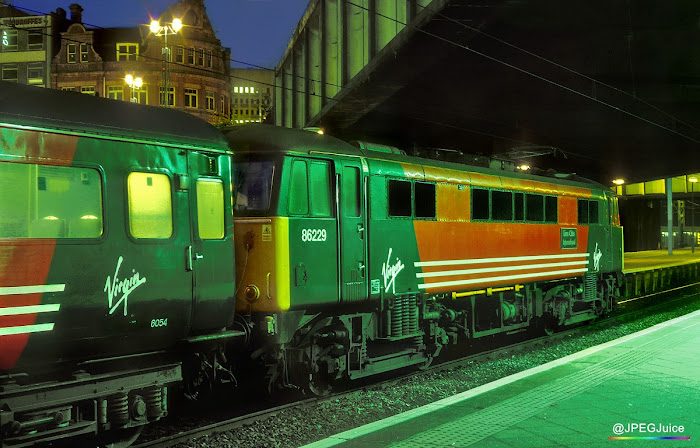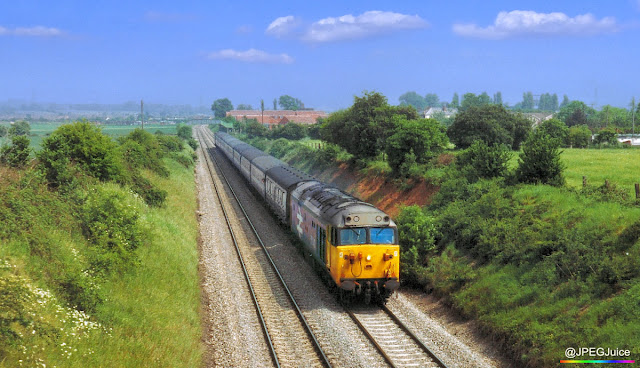"British Rail did not name any locomotives at all between the beginning of 1967 and the end of 1975. That's nine full years without any namings. Just let that sink in for a moment. Nine years."

Onto its second name... 86229 was originally named Sir John Betjeman in mid 1983. It was renamed Lions Clubs International whilst with Virgin West Coast fifteen years later. This shot shows the loco at Birmingham New Street on 15th November 2001.
If we're talking about classic diesel traction and I refer to Merddin Emrys, do I mean 47281, or do I mean 47145? If I reference Petrolea, do I mean 47374, or 37888, or 58042?... Unless we already have a context, you won't know. That's because these example names appeared on all of the loco options I've cited. Over the years, locomotive and train names have been fairly casually recyclable, or transient in their association with particular items of stock. Does that defeat the point of naming?
What, indeed, even is the point of naming? Who or what is it for? Is it for the rail enthusiast? For the wider public? For the person, group or entity honoured in the name? Or is it for the media, and ultimately for the publicity benefit of the train operator? Is naming about respect? And if so, does that respect extend to the actual loco or train? Is it about schmoozing? Is it about virtue signalling? Is it merely an honest attempt to add kudos to rail travel?... It would be naive to think it's not to some extent about the train operator drawing attention to itself. But has that quest, at times, been a little too obvious?...


